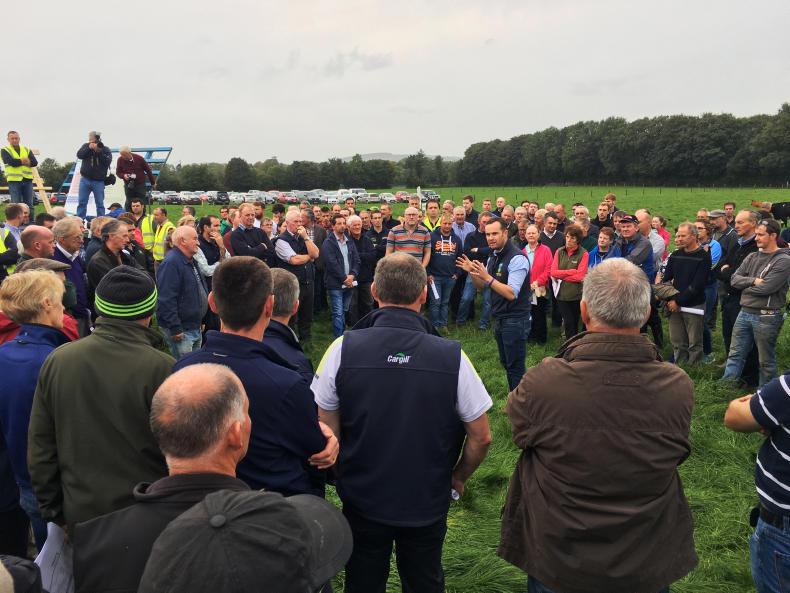As well as a dairy herd, sheep flock and calf-to-beef unit, Kildalton College boasts an impressive 60-cow suckler-to-beef herd.
The herd calves from mid-January to late March with a mean calving date of 22 February.
The herd
The cows are a mixture of breeds, varying from strong Charolais types to first-cross black Limousins.
An intelligent replacement strategy is in place – the top cows (selected based on replacement index and in-herd performance) are bred to maternal AI bulls each year with a view to producing good-quality heifers.
Six first-cross dairy heifers are also brought in annually to provide a milk injection. The rest of the herd go to a Charolais stock bull out of the infamous Lisnagre Elite (LGL).
Heifers are bred to AI, with Elderberry Galahad (EBY) the principle sire used.
Big crowd in Kildalton College for their suckler beef open day - farm gross margin of €1,400 in '16 pic.twitter.com/TewtPLi0aP
— FJ Beef (@FJBeef) September 6, 2017
Systems
In terms of destinations for Kildalton’s progeny, all but the lightest bull calves are slaughtered under 16 months of age in May/June, with the rest squeezed and run in a 24-month steer system.
In 2016, there were 22 bulls left entire and these achieved average carcase weights of 435kg on 20 May this year (average date).
All bulls graded U, or better and average price was €1,917. Approximately 1.5t of meal was fed per head.
The farm numbers
Stocking rate on the suckler herd’s ground (60ha) is 2.78LU/ha (196kg organic N/ha).
Gross output in 2016 was €2,422/ha and gross margin was €1,413/ha – meaning that the farm is keeping 58% of output before overheads.
This is excellent efficiency for a high-input system such as bull production, where the target is to keep 50% of output.
We can be losing up to 150g of growth per day with damaged lungs
Joe Hand of Teagasc and well-known Wicklow vet Tommy Heffernan covered the timely topic of calf weaning.
Tommy stressed that we should focus on pneumonia and to consider not just mortality, but lost performance as a result of lung damage.
“We can be losing up to 150g of growth per day with damaged lungs,” he said.
He also stressed that the bugs that cause pneumonia are already in the animal’s environment and when we introduce a stressor like weaning, we are ‘‘opening the door’’ for them.
Lungworm was a hot topic, with Tommy stating that it had been a particularly bad year for the parasite.
“For the first time we’ve had mature cows presenting with lungworm infestations at the veterinary hospital in UCD,” he said.
He encouraged farmers to watch out for the symptoms, particularly coughing, and urged attendees to weigh animals frequently so that problems can be picked up early.
Talking grass in Kildalton. Spreading 140 units N/acre annually. 60 spring-calving cows. Heifers have done 0.82kg daily since 15 March 560kg pic.twitter.com/8IktuknJtH
— FJ Beef (@FJBeef) September 6, 2017
Weanling series: preparing animals for sale
Weanling series: getting weaning right on suckler farms








SHARING OPTIONS